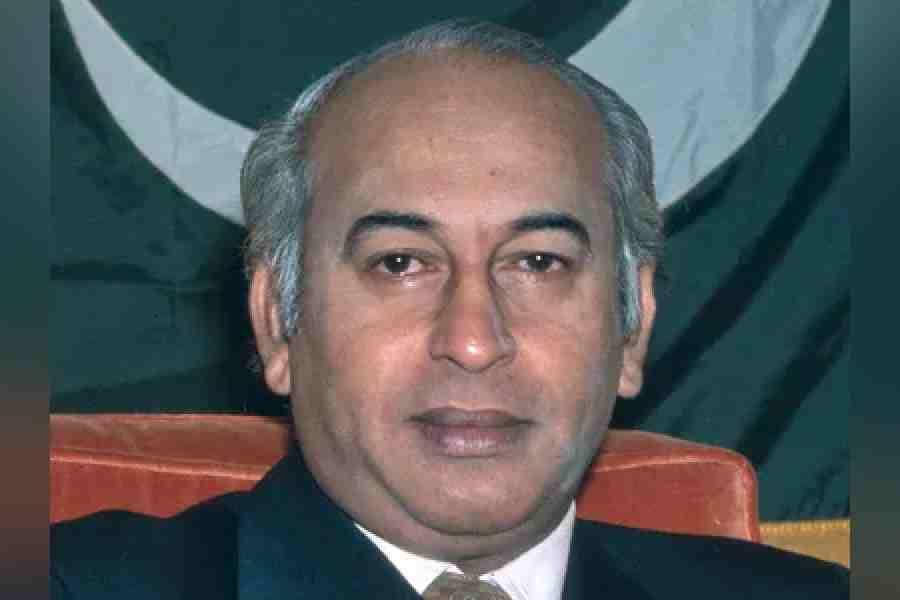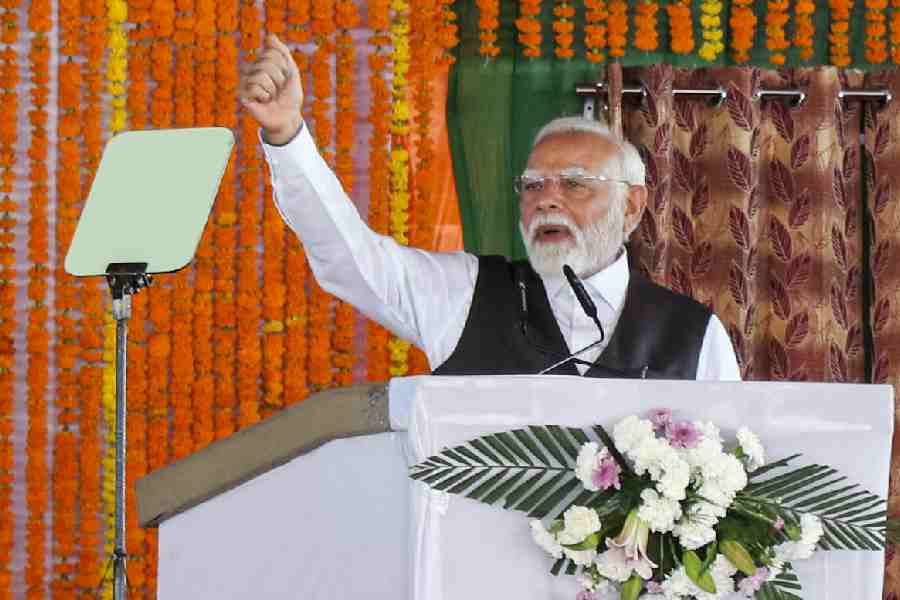 |
An already oppressive summer blazed its way to a seven-year record on Monday with extremes of heat and humidity that meteorologists called “highly abnormal” for this time of the year.
The maximum temperature hit 40.2 degrees Celsius around noon, which in combination with a humidity high of 87 per cent made for a day that felt like 70 degrees Celsius on the human body. Four Calcuttans collapsed while walking down pavements and died, possibly of heat stroke. A couple of privately owned horses also died of heat-related illnesses, sources said.
Metro highlights Calcutta’s heat woes, from skies without rain clouds to residential areas without power.
What the Met charts say: A measure of the weather extremities was the day’s minimum temperature, which didn’t dip beyond 30.7 degrees Celsius. “This reading is barely five notches below the normal maximum temperature for this time of the year, which says a lot about how Calcutta is suffering,” said a weather scientist.
The maximum of 40.2 degrees Celsius was the highest on a June day since June 2, 2005, when the Celsius had peaked at 40.6 degrees. While the reading at Alipore was four notches above normal, the 41 degrees recorded at Dum Dum was five notches above normal, which qualifies for a heat wave.
“Parts of the city, especially the eastern fringes, experienced heat wave-like conditions. This does not usually happen in June,” said Gokul Chandra Debnath, the director of the Regional Meteorological Centre in Alipore.
The day’s discomfort index was 15 notches above normal.
“The humidity range of 40 to 87 per cent is also unusual for this time of the year in Calcutta. The minimum is normally around 60 per cent and the maximum in the nineties. A maximum temperature of more than 40 degrees and a discomfort index of 70 degrees on a June day is highly abnormal,” said an official of the India Meteorology Department.
Why it is so hot: The key factors are low minimum humidity, lack of rain and a strong northwesterly flow of wind that is bringing intense heat from parts of Madhya Pradesh and Jharkhand.
The sluggish movement of the monsoon, which is expected to enter Kerala around June 6, could cause a corresponding delay in Bengal. In the absence of pre-monsoon showers, the city has turned into a cauldron.
According to weather scientists, the slowness of the monsoon is responsible for sub-normal moisture incursion into the air over the city, resulting in low humidity. During this time of the year, if minimum humidity is low, the surface of the earth heats up more easily through unrestricted solar radiation.
The northwesterly winds have been hotter than usual with Madhya Pradesh and Jharkhand seeing maximum temperatures in the 45-47 degrees Celsius range. “On entering south Bengal, these winds are further heating up the region through advection, a transport mechanism of heat by wind,” Debnath said.
What Tuesday is likely to be: Temperature and humidity are likely to mirror Monday’s readings. There is little possibility of rain in the city, although a partial cloud cover in the morning might raise expectations of some relief from the heavens.
The discomfort index will stay high. The Met office has issued a heat wave alert for the adjoining districts on Tuesday.
What June is capable of: The hottest ever June day in Calcutta was 88 years ago. “On June 18, 1924, the maximum temperature touched 43.9 degrees Celsius. Though temperatures might stay in the forties for another day or two, the all-time record is unlikely to be broken,” a Met official said.
How Monday took its toll: All four persons who collapsed and died of suspected heat stroke were outdoors at the hottest time of the day.
Two of the victims have been identified as Jagdish Shaw, 45, and Panchu Singh, 65. Police said Shaw was found unconscious on a pavement along RN Mukherjee Road in central Calcutta around 1.15pm. He was declared dead at Calcutta Medical College and Hospital.
Singh collapsed on a pavement in front of his house on Panditiya Road, near Lake police station, around 1.30pm. He was taken to SSKM Hospital but couldn’t be saved.
An unidentified 50-year-old woman became unconscious on a pavement in north Calcutta around 2.30pm. Bystanders took her to SSKM but she was dead before doctors could treat her. A 50-year-old man collapsed on Strand Road, near Mir Bahadur Ghat in the Burrabazar police station area, and was declared dead after being taken to Calcutta Medical College and Hospital.
The common symptoms of heat stroke are a dry, coated tongue, sunken eyes and protruding jawbones. “However, a post-mortem report is the only confirmation,” said forensic expert Biswanath Kahali.
Why animals are vulnerable: Heat killed two horses in the city on Monday, raising the toll in the past fortnight to six. One among the casualties was a steed of the mounted police.
With no respite in sight, Tollygunge Club has suspended riding lessons till the weather improves. At the Royal Calcutta Turf Club stables, the horses are being worked sparingly and their feed has been reduced. Fluids and ice baths are being given at regular intervals to keep them hydrated and cool. Some are being kept in air-conditioned stables.
Tollygunge Club CEO and horse lover A.R. Mukerji said: “There’s no riding activity in the club except very early in the morning. The horses need to stretch their muscles, so we take them out for very limited exercise, but no galloping or cantering. There are fans in the stables and we are also watering them to keep them cool.”
Several animals at Alipore zoo have taken ill because of the heat. “They are suffering from dehydration and frequently vomiting. The big cats have shown symptoms of indigestion, forcing us to reduce their intake of food. The only chimp in the zoo has developed skin rashes and become weak,” said a zoo official.
Although the zoo authorities claim the animals are being given oral rehydration solutions and plenty of cold water, a round of the zoo on Monday revealed a shortage of water in several enclosures.
How power played truant: Most residents of VIP Enclave, near Baguiati on VIP Road, were without power for over 24 hours since Sunday afternoon. “Power went off around 2pm on Sunday. We used our inverter for about three hours in the afternoon and then switched it off for the night,” said Shiladitya Banerjee, a Jadavpur University student.
The complex has 450 flats, of which 280 were without power supply.
Unable to bear the torment any longer, Shiladitya and his parents left for a relative’s house in Sovabazar in the morning. Power was restored around 6pm on Monday.
A power cut in DL Block of Salt Lake’s Sector II at 12.18am on Monday forced residents out of their beds for more than two hours. Power supply resumed around 1.30am, only to go off again. By the time the fault was repaired, it was 2.10am.
Many other localities suffered random power cuts.
What schools are planning: Some schools in Calcutta have extended their summer vacations. South Point High School, which was originally scheduled to reopen on June 6, will now do so on June 11. The Apeejay schools will reopen on June 18 instead of June 11.











